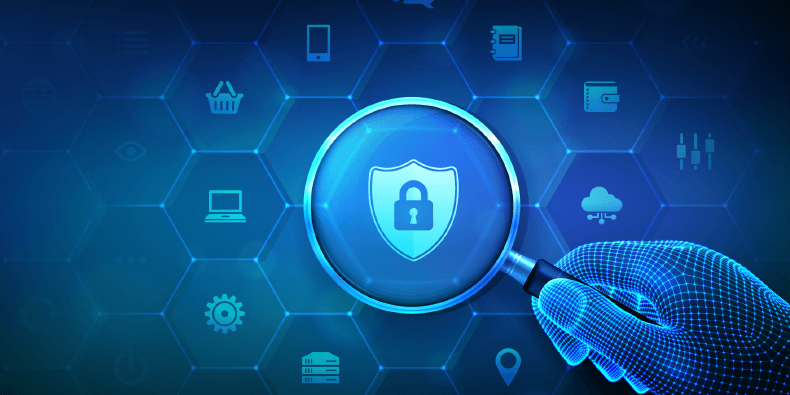
The price of protection: Why cyber insurance premiums are on the rise
Cyber insurance premiums are on the rise and policies are offering lower coverage. Learn how you can secure and protect your business.…




Oliver Pinson-Roxburgh
CEO and Co-Founder
4th December 2023
As cyber threats continue to pose growing risks for businesses across every industry, effectively communicating the importance of cyber security up, down and across your organisation is key. While security leaders grasp technical details about the latest threats, vulnerabilities, tools and techniques, it can be challenging to effectively communicate business risk in a way each member of the board can understand and relate to.
When speaking to different members of the board and C-Suite about cyber security, a useful way to ensure full understanding is to tailor messaging to each individual’s knowledge base, interests and priorities. Here’s some guidance on having strategic cyber security conversations with the key stakeholders in your business:
The CEO has a lot of influence on how the rest of the board and wider business embrace security, so it is important to ensure the CEO is brought in to help foster a security culture. You can focus discussions with the CEO on the potential impact that security incidents could have on brand reputation, customer trust, revenue loss and risk management. This will help them to understand the business impact of cyber breaches. Once they understand this, you can offer recommendations on effective security strategies and help executive communications to cascade priorities across business units.
Your CFO is responsible for businesses expenditure as well as business profit, therefore they will have input in the budget allocation for cyber security. They’ll naturally be more interested in proposed investment vs incident response expenses (downtime, overtime pay for incident response teams & PR for reputation repair). It will help to outline options with cost-benefit comparisons and industry data points or case study examples where security programs, or lack thereof, demonstrate a huge business expense. If you’re up against the ‘but we have cyber insurance’ stance, you can share benchmark data on cyber premiums and demonstrate how robust security controls can help to not only minimise spend, but better protect the organisation against cyber threats.
The CIO/CTO plays a vital part in the cyber security discussion because they understand the technical side of things. These thought leaders can provide valuable insights into not only vulnerabilities and emerging risks, but also the tech stack used in the business and the impact of any new security protocols on current development. This person will be able to influence the adoption of secure by design and help to embed a security culture within development and product. It will therefore be beneficial to understand where they could foresee any stumbling blocks in the implementation of your security strategy.
The CMO is responsible for overseeing the company’s marketing initiatives which will likely include customer and sales data that could be sensitive if breached. They are involved in conversations when it comes to the implementation of security measures to protect this data, manage access controls and permissions, as well as establishing protocols when sharing data with third party marketing tools and agencies. When speaking to the CMO make it clear that any marketing content and campaigns need to comply with data protection regulations to avoid violations from improper data collection or use, and how important this is for the brand-customer relationship. Share case studies about companies that faced big losses because their security got breached. You want to demonstrate how good cyber security supports marketing initiatives.
The board chair/lead director is responsible for setting the tone at the top for transparency, accountability and alignment across all critical areas of the business. They will ensure that the organisation is adhering to compliance rules and that cyber security is receiving appropriate executive attention and strategic consideration. To get them on board you need to frame the conversation through a corporate governance, fiduciary duty and risk oversight lens. You should discuss regular schedules and timelines for security reporting, tabletop testing and preparedness but also educate them on the requirements for compliance such as GDPR, PCI DSS, ISO 27001 and HIPPA. This will help shape goals for overseeing the organisations cyber readiness as well as actions and deadlines needed for risk assessments, audits, insurance, breach disclosures and the need to stay up-to-date with current threats.
When presenting to the entire board and C-Suite, keep these tips in mind:
Data breaches are rising, so cyber security risks can no longer be ignored by leadership. By 2025, cyber crime is estimated to cost $10.5 trillion globally, increasing by 15% year over year. To gain support for robust defences, security leaders should customise messaging about cyber risks and solutions for each executive based on their priorities. Technology alone cannot solve security issues; boards must actively oversee cyber strategies. By understanding motivations, speaking stakeholders’ language, and promoting shared responsibility, security teams can cultivate the long-term commitment needed to boost cyber resilience across the organisation.

Oliver Pinson-Roxburgh
CEO and Co-Founder
Share this article

Cyber insurance premiums are on the rise and policies are offering lower coverage. Learn how you can secure and protect your business.…

Discover everything you need to know about implementing a secure by design approach.…

Understand how to conduct a step-by-step cyber security risk assessment to help you identify, assess and manage cyber risks that could affect your business.…

How well prepared is your business to withstand and recover from a cyber attack? Discover best practice advice on how to best prepare.…
Get actionable cyber security advice and insights straight to your inbox.